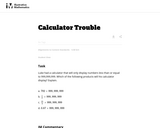
This task requries students to think about division by fractons.
- Subject:
- Mathematics
- Material Type:
- Activity/Lab
- Provider:
- Illustrative Mathematics
- Provider Set:
- Illustrative Mathematics
- Author:
- Illustrative Mathematics
- Date Added:
- 05/01/2012

This task requries students to think about division by fractons.
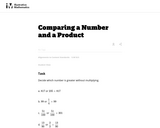
The purpose of this task is for students to compare a number and its product with other numbers that are greater than and less than one.
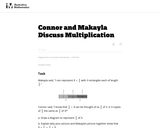
The purpose of this task is to have students think about the meaning of multiplying a number by a fraction, and to use this understanding of fraction multiplication to make sense of the commutative property of multiplication in the case of fractions.
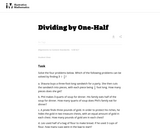
This task requires students to recognize both "number of groups unknown" and "group size unknown" division problems in the context of a whole number divided by a unit fraction.
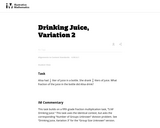
This task builds on a fifth grade fraction multiplication task and uses the identical context, but asks the corresponding ŇNumber of Groups UnknownÓ division problem.

This task builds on a fifth grade fraction multiplication task and uses the identical context, but asks the corresponding ŇNumber of Groups UnknownÓ division problem.

This resource includes Exit Tickets for 4.NF.4.
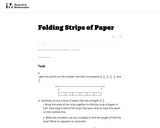
The purpose of this task is to provide students with a concrete experience they can relate to fraction multiplication. Perhaps more importantly, the task also purposefully relates length and locations of points on a number line, a common trouble spot for students. This task is meant for instruction and would be a useful as part of an introductory unit on fraction multiplication.

This task requires students to think about and compare fractions.
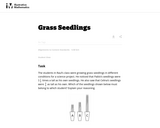
This task requires students to think about and compare fractions.
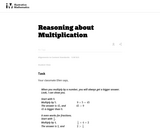
This task helps students understand that when you multiply by a number you always get a bigger number.

This word problem asks students to think about fractions.
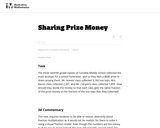
This task requires students to be able to reason abstractly about fraction multiplication as it would not be realistic for them to solve it using a visual fraction model. Even though the numbers are too messy to draw out an exact picture, this task still provides opportunities for students to reason about their computations to see if they make sense.

This task is from Tools for NC Teachers. Students compare the difference between a fraction times a whole number compared to a fraction divided by a whole number. This is remixable.
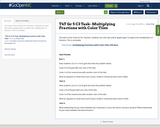
This task is from Tools for NC Teachers. Students use color tiles and/or graph paper to explore the multiplication of fractions. This is remixable.